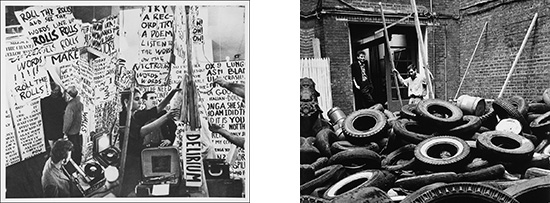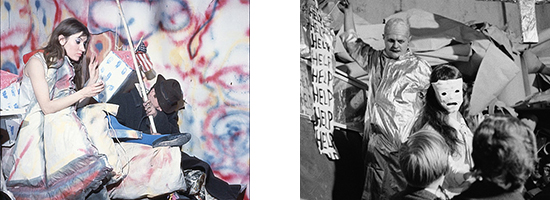Robert McElroy Archive
Robert R. McElroy photographs of happenings and early performance art
|
This collection of materials from Robert McElroy contains some of the best-known images of Happenings and captures the iconic moments that have come to define contemporary understanding of postwar performance. The archive includes more than 700 vintage prints and 10,000 negatives documenting performances by Jim Dine, Allan Kaprow, Claes Oldenburg, Yvonne Rainer, Carolee Schneemann, and Robert Whitman, as well as lesser-known performances that have been all but forgotten due to a lack of available documentation.
|

|
|
Unlike the artists whose performances he photographed, McElroy's name is not well known. Yet it is due in large part to McElroy that their early, ephemeral works—now considered groundbreaking moments in the history of modern art—are so recognizable and esteemed today. McElroy was the go-to photographer for these and other artists in New York who, from the late 1950s through the mid-1960s, created Happenings and performances that reimagined and revolutionized what a work of art might constitute.
McElroy was strategic in his approach to his subjects, remaining at once ever-present and inconspicuous. Rather than participate physically in the artists' performances, he became a participant through the lens of his camera. His belief in the significance of what he was documenting is clear from his negatives, which often bring to light how artists developed their early performances and Happenings—events that were by their nature unrepeatable and fleeting. |

|
|
Providing a material demonstration of the fluid boundaries between artistic movements such as Happenings, Fluxus, and pop art, the archive is fundamentally related to many of the Research Institute's core collections of postwar art. It intersects and expands upon the material contained in most of the Institute's artist archives related to New York in the late 1950s and early 1960s, including the archives of Allan Kaprow, Carolee Schneemann, Robert Watts, Yvonne Rainer, and Dick Higgins, while adding significant documentation of important galleries such as that of Martha Jackson and Anita Reuben.
|
